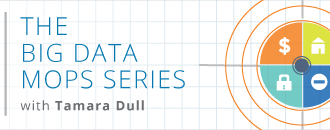Like other enterprise functions, marketing cannot exist as a silo, especially when it comes to the technologies that are needed to address how well companies engage their customers and help them purchase their products. Sophisticated, integrated technologies have to come into play to provide the continuous data, information and content that most marketing initiatives must have to be successful.
Like other enterprise functions, marketing cannot exist as a silo, especially when it comes to the technologies that are needed to address how well companies engage their customers and help them purchase their products. Sophisticated, integrated technologies have to come into play to provide the continuous data, information and content that most marketing initiatives must have to be successful.
Marketing activities should be designed to align with buyer journeys, but customer buying journeys are all different which makes the effective management of information and content even more complex. Multichannel customer experiences are often fragmented and hard to assemble into a “singular” experience. It’s not about providing the “same” customer experience across all channels – it’s about making sure that the same reliable and timely information is available to every channel to handle any customer experience with agility, relevance and accuracy. The driving force here is Context – what does the customer want to do? Do your enterprise systems know what to deliver to meet customer desires? Do you have the best content or information available?
Source: Agility Multichannel
Finding Context: Master Data Management
Marketing organizations are constantly challenged to synthesize a comprehensive understanding of each customer or customer category. Achieving a full-bodied view of customers requires the right technologies for collecting, validating, and analyzing a lot of information about customer interactions, including responsiveness to marketing and sales efforts, buying behavior, and purchase outcomes. One technology solution that is becoming increasingly important to many organizations for ensuring reliable data and information is master data management.
Until recently, master data management (MDM) had been regarded as one of those techie functions, deeply internal to enterprise infrastructure. As it turns out, MDM is very much a business asset that has a growing role in many areas that should matter to enterprises: strong brand presence, multichannel customer interactions, right-fit content and information, and highly variable buying journeys.
Behind the scenes, MDM works to eliminate the data and process silos that threaten the ability of enterprises to do a better job with customer interactions. The most up-to-date and useful data now comes from many sources, some internal to the enterprise and others from sites all over the digital landscape. But it’s not just the data that needs management. MDM handles identity resolution for all of that disparate data to connect it to the right customers, products, and channels.
Data quality and data governance processes and practices are important parts of MDM. To succeed with accurate analytics and customer initiatives, centralized, high quality data is a must-have. Hard work has to be done to make sure data is relevant, particularly if it originates from multiple sources of varying reliability. Many data-driven processes need to take on adaptive capabilities to handle those highly variable customer journeys and multichannel interactions.
Why do business functions like marketing and sales have to get into the world of data management?
Sales and marketing teams are the business experts who know how data needs to be used and in which business processes. They also know the importance of high quality data – and the pain of analytics that produce bad recommendations when the data is unreliable. Increasingly, MDM solutions are opening up access to business users to involve these usage experts in the management of master data.
For customer experiences and buying journeys, context is where master data shines. It takes both the experience of business users and analytics processes based on accurate data to understand context for customer interactions.
“Information and Content Central” for the Multichannel Customer Experience
Successful outcomes for multichannel buyer journeys depend on the ability to engender customer experiences that are consistent, but not necessarily the “same”, across channels. To provide the right content and information to the right channel for a specific customer interaction requires the right technologies. Master data management is integral to building and maintaining a reliable centralized repository of ready-to-go information and content that can be segmented by products, customer categories, channels, media, and so on. A “360 view” of each customer or customer category is another aspect of MDM that is obviously important for improving customer experiences.
Marketing efforts often include rich content, for digital and offline purposes. Repurposing content and the availability of ready-to-go content are distinct needs as well. As with any content marketing effort, strategies must be in place to connect content to the corporate focus on customers, marketing and sales, and business outcomes. Multichannel requirements add to the importance of a strategic approach to improving customer experiences.
Personalization Improves with Master Data
More attention is going into personalized communications with customers that work well for a particular channel of engagement. But personalization can only be effective with accurate, up-to-date information on customers, products, channels, locations, and other relevant data domains.
Stephen Powers and Ron Rogowski of Forrester discuss the role of contextualization for creating on-the-money personalized customer experiences that will bring about successful outcomes for digital commerce, where contextualization provides “tailored, adaptive, and sometimes predictable digital experiences”:
While this sounds like a no-brainer, companies still fall short of meeting this goal because they guess at what their customers want and need, don’t share customer data across silos, and don’t take advantage of real-time cues. In fact, only 41% of customer experience professionals from our Marketing & Strategy Research Panel say that they consistently use customer research when considering customer experience design projects.
Channel appropriate personalization is a key ingredient for nurturing positive customer experiences. The content itself and the delivery mode must be the right stuff for each channel. “Responsive design” must partner with master data. Master data can make a big difference for better understanding context: the elimination of data silos; clarity around the relationships of customers to products and channels; access to customer activities on social sites; and ensuring the reliability of data for accurate personalization.
Navigating Customer Relationships
In many enterprises, data-related processes need to align with the real world intricacies that companies face, especially in terms of complex relationships and hierarchies with respect to customers and their extended networks. Social networks are prolific creators of data related to potential and current customers. And social data is now an important source for master data management. Including social data should help the enterprise see the customer’s network of relationships as well as reveal non-obvious relationships and spheres of influence – these views frequently are not possible with traditional systems such as CRM. MDM helps to analyze customer relationships in social networks for correlation to master data domains.
Another navigational aspect of customer transactions and interactions is location. Location or spatial analytics help reveal relationships, patterns and trends that can prove to be quite valuable. Through analytics for customer locations, it’s possible to visualize new understanding of relationships between the data for products, marketing and sales channels, and revenue, as well as for the customer.
Source: Pitney Bowes Spectrum MDM Platform
Master Data Keeps the Brand in Context
Efforts to support multichannel customer experiences and buying journeys should lead to business outcomes like happy customers, sales growth, and ultimately a strong brand. These results are not possible for enterprises that never go beyond data silos that perpetuate redundant, contradictory and out-of-date information for customers, products and pricing. Many organizations continue to try to operate with separate systems where neither data nor processes are well integrated. The result: fragmented cross-channel visibility and incomplete views of customers that damage the efforts of the enterprise to engender positive multichannel experiences.
MDM initiatives are not trivial exercises. But once in place, enterprises can reap large rewards on a continual basis. Master data feeds into analytics and decision processes that translate information into actions that nurture better experiences for customers.
Brand is the reflection of overall customer experiences over time. Master data provides the means to better connect all functions in the enterprise to accurate customer intelligence, the current context of customer needs and activities, and the relationships of customers to products and channels. These are the building blocks of improving customer interactions on any channel.










